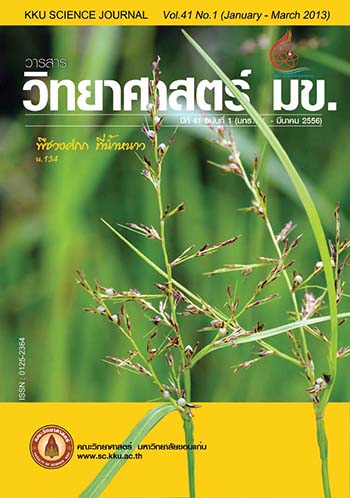Utilization of Wastewater Sludge to Improve Soil for Khao Dawk Mali 105 Rice Planting
Main Article Content
Abstract
The aim of this research was to study the utilization of wastewater sludge from peanut food factory to improve soil for rice planting. Experimental soil was from Samutprakarn and Suphanburi farmland. In the experiments, the ratio of wastewater sludge to soil was varied as followed 0, 12, 24, 36 and 48 kg/m2. Khao Dawk Mali 105 was planted for 97 days before harvesting. Chemical characteristics of soil and wastewater sludge were analyzed both before and after planting. After harvesting, the concentration of heavy metals in grain and shoot, shoot length, yield and grain mass were analyzed. It was found from experiments that the value of pH, EC, Moisture, OC, total N, Available P, Available K, total content of Fe, Zn, Cu and Mn in the mixture of wastewater sludge and soil were decreased after planting. The concentration of all heavy metals in grain and shoot were found in the safe limits of human consumption except Fe in shoot. The results indicated that the shoot length, yield and grain mass were higher in the wastewater sludge soil. Mixture treatment 36 kg/m2 wastewater sludge content in the soil was gave the highest shoot length. However, the 36 kg/m2 and 12 kg/m2 mined in the Samutprakarn soil aim the highest grain mass and yield respectively While the 48 kg/m2 mixed treatment of Suphanburi soil affected to the highest grain mass and yield.
Article Details

This work is licensed under a Creative Commons Attribution-NonCommercial-NoDerivatives 4.0 International License.


